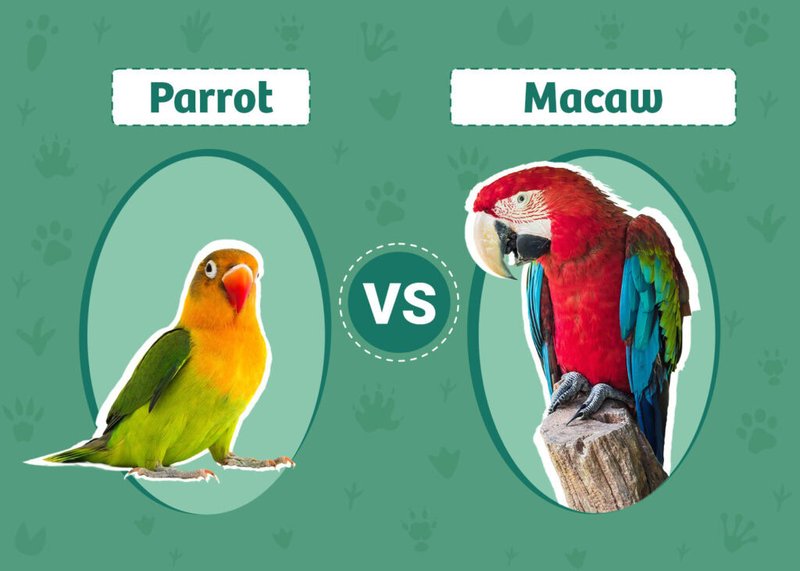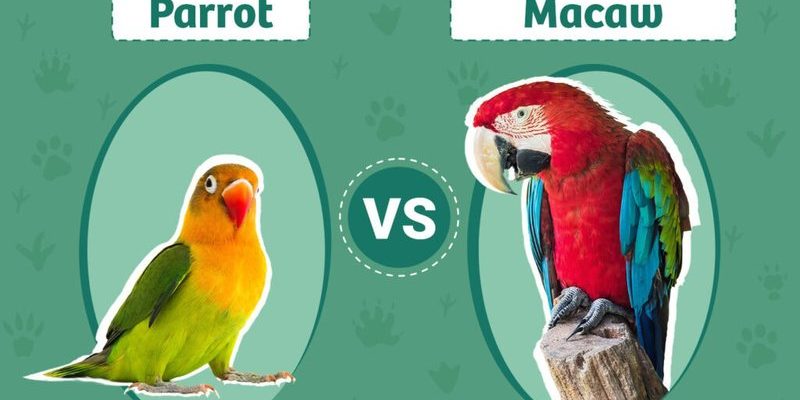
Let’s delve into the rich world of Macaws and their feathered relatives. We’ll explore what makes Macaws unique, how they compare to other parrots, and the subtle differences that can help you identify them in the wild. So, grab your favorite beverage, and let’s chat about these colorful creatures!
What Is a Macaw?
Macaws are large, colorful parrots native to Central and South America. With their long tails, curved beaks, and sociable nature, these birds are often the stars of the show in avian communities. There are several species of Macaws, including the Blue and Yellow Macaw, Scarlet Macaw, and Green-winged Macaw, each boasting a stunning palette of colors that captivate anyone lucky enough to encounter them.
What sets Macaws apart is their intelligence and strong social bonds. They often live in flocks and communicate with a variety of sounds, ranging from soft chirps to loud squawks. Imagine a lively gathering of friends at a café—that’s what a flock of Macaws looks like! They thrive on companionship, which is one reason they make such beloved pets (when they receive the right care).
How Do Macaws Compare to Other Parrots?
When you think of parrots, you might picture a small bird perched on someone’s shoulder, reciting phrases and mimicking sounds. While Macaws share some traits with other parrots, they stand out due to their size and personality. Most Macaws are larger than typical pet parrots, like Budgies or Cockatiels. For example, a Blue and Yellow Macaw can measure up to 34 inches in length, while a Cockatiel is only about 12 to 14 inches.
Let’s break down some key differences:
- Size: Macaws are the giants of the parrot family, while smaller parrots are often more compact and easier to manage.
- Personality: Macaws have playful and affectionate personalities, often needing more social interaction than smaller species.
- Diet: While all parrots enjoy fruits, seeds, and nuts, Macaws require a more varied diet due to their size and nutritional needs.
If you’re wondering about keeping Macaws as pets, just remember their size and social needs can be quite demanding.
Recognizing Different Macaw Species
Identifying various Macaw species can be a delightful challenge. Each one has its signature color patterns and characteristics. For instance, the Scarlet Macaw boasts bright red feathers with yellow and blue wings, while the Green-winged Macaw has a more subdued palette, featuring deep green wings and a striking red face.
Here’s a simple breakdown to help you tell them apart:
- Scarlet Macaw: Known for its vibrant red body and blue wings.
- Blue and Yellow Macaw: Features bright blue wings and a sunny yellow underbelly.
- Green-winged Macaw: Has a mostly green body with striking red accents.
By paying attention to their colors and features, you can easily spot these beautiful birds in their natural habitats or even at a pet store.
The Habitat of Macaws vs. Similar Birds
Macaws are primarily found in tropical rainforests, where they soar high above the canopy. They thrive in areas rich with vegetation, where they can forage for fruits, nuts, and seeds. Their need for space to fly and socialize is essential, which is why they’re often found in flocks.
Other birds, like certain species of Amazon parrots, also inhabit similar environments but differ in their specific nesting and feeding habits. For example, Amazon parrots may prefer denser parts of the forest or areas closer to water sources.
The habitat differences also influence their behavior:
- Macaws: Typically more social and vocal, often seen in flocks.
- Amazons: Can be more solitary and less vocal, depending on the species.
Understanding these habitats can help you appreciate the natural behaviors of these birds.
Dietary Preferences: What Do Macaws Eat?
Macaws have a varied diet that is crucial to their health and well-being. In the wild, they consume a mix of fruits, seeds, nuts, and even flowers. Their strong beaks allow them to crack open hard nuts, like Brazil nuts, which many smaller parrots can’t manage.
When compared to other parrots, Macaws often require a larger quantity of food due to their size. Smaller parrots, like lovebirds, may live on a diet of seeds and pellets but typically don’t need the same level of protein and variety.
Here’s what you might consider including in a Macaw’s diet:
- Fresh fruits: Apples, bananas, and berries are great choices.
- Vegetables: Dark leafy greens are excellent for their health.
- Nuts: Just a few nuts can provide essential fats and protein.
You might be surprised at how much a Macaw can eat—sometimes up to a cup of food a day!
Behavioral Traits: Personality Differences
When you think of Macaws, think of vibrant personalities! These birds are not just beautiful; they’re also highly intelligent and curious. They love to explore their surroundings and can be quite vocal, often using their calls to communicate with one another.
In contrast, some other birds, like cockatoos, may show different behaviors. While cockatoos are also social and intelligent, they can be more demanding in terms of attention and affection compared to Macaws.
Here’s a closer look at their behavioral traits:
- Macaws: Generally friendly, affectionate, and playful. They enjoy interacting with humans and can learn a variety of tricks.
- Cockatoos: Affectionate but can also be more temperamental and demanding when they don’t get enough attention.
This unique behavior makes Macaws appealing to bird lovers but also means they require a lot of time and commitment.
Conservation Status: Macaws and Similar Species
Sadly, many Macaw species face threats from habitat destruction and the illegal pet trade. The loss of forests where they thrive puts their populations at risk. While organizations work diligently to protect these beautiful birds, knowing the conservation status of similar species is equally important.
For example, the Spix’s Macaw is critically endangered, primarily due to habitat loss. In contrast, some other species like the Blue and Yellow Macaw are more stable, although still threatened.
To do your part, consider these actions:
- Support conservation efforts: Donations to wildlife organizations can help protect Macaws and their habitats.
- Adopt responsibly: If you’re thinking of getting a bird, consider adopting from shelters instead of buying.
Every little bit helps in ensuring these amazing birds continue to thrive in the wild.
In conclusion, whether you’re admiring Macaws in the wild or learning about them for the first time, understanding their differences from similar bird species enriches your appreciation for them. Their vibrant colors, social nature, and unique dietary needs make them stand out in the avian world. Next time you spot a Macaw, you’ll know exactly what to look for, making the experience that much more special.

